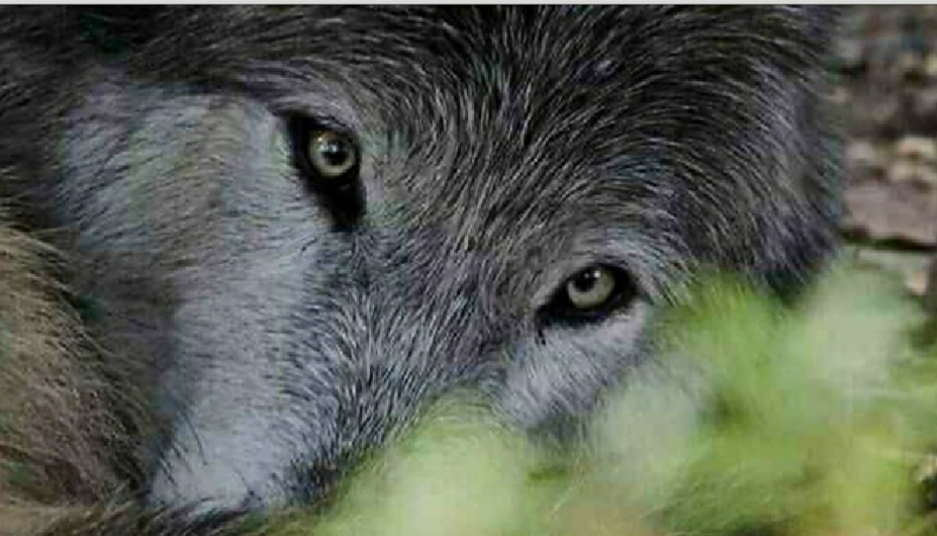Voice Your Opposition to Alaska’s Shameful Predator Control Program.
UPDATE: The comment period has been extended 30 days. Please comment by April 7, 2016. Thankyou.
Generally the federal government allows the State of Alaska (and other states) to manage hunting and fishing on federal lands. But sometimes the State refuses to follow federal mandates even though Federal management authority always takes preference over state management directives. The USFWS is mandated to “protect natural diversity and abundance”.
Under Title VIII (Subsistence Management And Use) of the Alaska National Interests Lands Conservation Act (ANILCA), Alaska Natives and other rural residents were granted hunting and fishing rights (when fish and game are not under outside threat) on National Preserves. The ANILCA did not, however, allow Alaska to manage its wildlife as it has been ~ which is not unlike a game farm, where wolves and bears are decimated to allow unchecked trophy hunting and commercial guiding, and led to the implementation of tighter restrictions by the National Park Service. Alaska is unique among the 50 states for allowing sport and subsistence hunting in the 17 million acres of national preserves added to the National Park System by the ANILCA. While Congress recognized the “important value of subsistence and (sadly, and in my opinion disgracefully) sport hunting”, it allowed both to take place only where consistent with the mandate to protect and conserve wildlife resources.
State sport hunting regulations passed by the Alaska Board of Game apply on public lands, but only when those regulations do not conflict with federal mandates or National Park policies. The Board, however, has noticeably become increasingly aggressive in its efforts to implement predator control on federal public lands through liberalization of sport hunting and trapping regulations. For example in 1994, the Alaska Legislature passed the Intensive Management Statute with which the explicit goal was to maintain, restore, or increase the abundance of big game populations for human consumptive use.
The following 2 maps illustrate the enormous expansion of state designated predator control areas (PCA) from 2001 to 2014. The maps also show that the boundaries of most national preserves had been encroached upon and many had become virtually surrounded by Predator Control Areas in just 14 years. Note the vast increase of “wolf control” areas (in yellow).


The Board has also practiced intensive management by liberalizing sport hunting regulations, including:
*increasing bag limits from five per season up to 20 per season or 10 per day (as high as 20 a day for wolves in some areas of the state), and liberalizing hunting seasons for predators to increase their “harvest”.
*eliminating the need for hunters to obtain or purchase hunting tags or permits for predators.
*permitting the incidental taking of predators.
*authorizing same-day airborne hunting and trapping, which allows hunters to take predators the same day they’ve been flying.
*allowing the use of bait to lure predators.
*And, of course, the aerial gunning of wolves. Note that in 2011, the Board issued an emergency order to extend wolf hunting and trapping seasons in GMUs 9 and 10 to increase caribou numbers and as a way of getting around the U.S. Fish & Wildlife’s prohibition on aerial wolf control programs on Unimak Island. Furthermore, the board has repeatedly refused to reduce the impact of its programs on national preserves. For example, in the spring of 2014, the radio-collared Lost Creek wolf pack left the borders of the Yukon-Charley Rivers National Preserve and was eliminated through aerial shooting by state agents implementing one of the Board’s intensive management plans. The Park Service had been studying the Lost Creek pack for seven years as part of a roughly 20-year study of wolves in the Yukon Charley National Preserve; The State predator control efforts killed 36 wolves in the area in a single year, reducing the preserve’s population by over half. Another example is the Board’s 2010 elimination of the 122 square-mile buffer adjacent to Denali National Park that protected wolves crossing its boundaries from hunting and trapping~Two years later, the wolf populations in the Park were the lowest in decades.
The USFWS should prevent application of state regulations which are incompatible with management objectives for the nearly 77 million acres of wildlife refuges across the state. Period.
The National Park Service has also been at odds with the State which led to the implementation of tighter restrictions on sport hunting (the closure regulations became effective Nov. 23 2015, and new hunting regulations effective January 1 2016. More information regarding the NPS regulations can be found here.
In contrast to the goal of the Game Board, which is to ensure maximum sustained populations for hunting a proposed new rule from the U.S. Fish and Wildlife Service would limit predator control in national wildlife refuges and is deserving of your support.
The draft rule, published in the Federal Register, aligns with a similar National Park Service rule that was finalized in October, banning abhorrent practices such as bear baiting, and the Game Boards’ liberal predator control “management” which could “disrupt natural processes and wildlife interactions” (In recent years, the Game Board has allowed harvesting of brown bears at black bear bait stations, taking wolves during denning season and has classified black bears as fur-bearers and big game species, “which could allow for trapping and snaring of bears and sale of their hides and skulls”).
The Proposed Rule “clarifies how existing mandates for the conservation of natural and biological diversity, biological integrity, and environmental health on refuges in Alaska relate to predator control; prohibits several particularly effective methods and means for take of predators”. This would formally establish a goal of biodiversity as the guiding principle of federal management of wildlife refuges (The Fish and Wildlife Service says the rule makes clear it would have no impact on subsistence hunters).
That, of course, stands in contrast to the goal of the Game Board, which is to alter or manipulate natural predator-prey dynamics to increase human harvest of ungulates.
Heather Tonneson, a regional refuge ecologist for the Fish and Wildlife Service, who was one of the rule’s primary authors, said the rule would “clarify existing legal mandates”. Tonneson also noted that the agency is “not done yet. It’s a proposed rule” and the agency wants to hear from the public and is open to changes.
I, myself, believe that their intent is to rein in Alaska, and make it clear to everyone that this sort of Intensive Management of predators is not going to be allowed.
Please show your support for this proposed new rule from the U.S. Fish and Wildlife Service that would limit predator control in national wildlife refuges, it would help put an end to the suffering and death of many of our voiceless friends.
The U.S. Fish and Wildlife Service is taking public comment until March 7th, though, Alaska Gov. Bill Walker plans to ask the federal government to double the public comment period for the rule.
There will be nine public hearings. Comments can be submitted online through regulations.gov using docket number FWS-R7-NWRS-2014-0005, or directly here.
Or by mail to: Public Comments Processing, Attn: [FWS-R7-NWRS-2014-0005]; Division of Policy, Performance, and Management Programs; U.S. Fish and Wildlife Service, MS: BPHC; 5275 Leesburg Pike, Falls Church, VA 22041.
Below, please find a sample comment, please personalize. Note: Agencies review all submissions, however some agencies may choose to redact, or withhold, certain submissions (or portions thereof) such as those containing private or proprietary information, inappropriate language, or duplicate/near duplicate examples of a mass-mail campaign.
Sample comment:
It is my understanding that this proposal to amend regulations for National Wildlife Refuges in Alaska was developed in response to public concern about predator control and recent liberalization of predator “harvest” within the State of Alaska. Thankyou, and I welcome a policy encouraging the maintenance of more biological diversity on refuges, and an end to the horrific “predator control” found to be acceptable and encouraged by the State.
State regulations which have long authorized the hunting/trapping and other intensive management actions that involve predator reduction efforts with the intent or potential to alter or manipulate natural predator-prey dynamics and associated ecological processes (to increase human harvest of ungulates) is in conflict with the federal mandate, and abhorrent.
I appreciate the U.S. Fish and Wildlife Services’ proposed rule which would clarify that predator control is not allowed on national wildlife refuges in Alaska, “unless necessary to meet refuge purposes, federal laws or Service policy, and is consistent with the agency’s conservation mission”, and appreciate your efforts here.
It is high time that Alaska stop treating our national preserves like game farms, and wholeheartedly support this proposal,
Your name
Thankyou, in advance, for your anticipated efforts on behalf of the wildlife on our National Preserves in Alaska.
USFWS News Release | Related content
Copyright © 2015 [COPYRIGHT Intheshadowofthewolf, name and webpage]. All Rights Reserved.
No part of this publication may be reproduced or distributed in any form or by any means, or stored in a database or retrieval system, without the prior written permission of the publisher.




You must be logged in to post a comment.